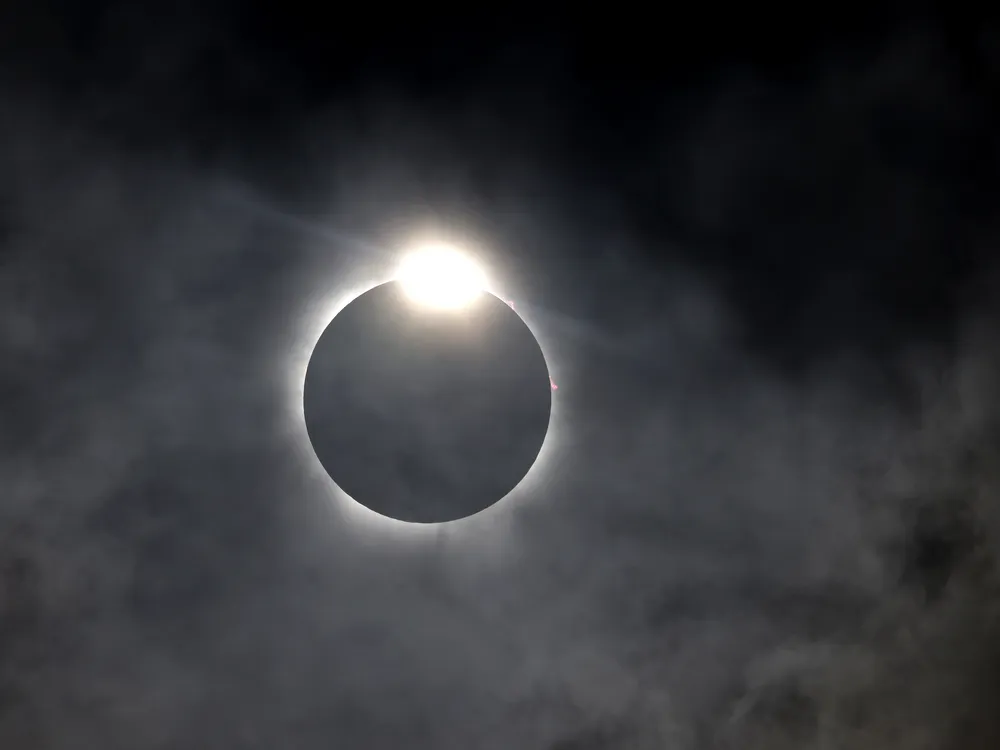Totality is when no solar surface can be seen. Bailey's Beads occur just before totality.
As I said:
That looks
close to totality to me - if you saw the beads. My emphasis.
Also, "Totality is when no solar surface can be seen.", are there not degrees of "totality"? Slight variations which cause a halo and a tiny, even immeasurable, amount of surface?
Overwhelmed?
The corona is the outer atmosphere of the sun. It is made of tenuous gases and is normally hiding in plain sight, overwhelmed by the bright light of the sun's photosphere. When the moon blocks the sun's face during a total solar eclipse, the corona is revealed as a pearly-white halo around the sun.
I appreciate the difference between the solar atmosphere and the solar surface, but do not differences in the moon/sun distance allow views of the surface, as most certainly are relevant to the nature of the apparent ring of light ("corona") around the moon: in the past/future?
And how about the following (NASA)? I appreciate that it depends on the definition of a total:
Total solar eclipses won't be around forever!
The Moon's orbit is changing. In fact, the Moon's orbit grows about 1.5 inches (3.8 cm) larger every year. As the Moon's orbit takes it farther and farther away from Earth, the Moon will appear smaller and smaller in our sky.
This occasionally happens now. The Moon's orbit isn't perfectly round. That means that sometimes the Moon is slightly farther away from Earth than it is at other times. Sometimes the Moon is far enough away that it doesn't create a total solar eclipse. In this case, the Moon obscures most of the Sun, but a thin ring of the Sun remains visible around the Moon.
OK, it all depends on the definition of "total", but it is a bit feeble if you do not count the atmosphere as part of the Sun. Or 0.001% surface showing with atmosphere denies "totality".
This is not good science - it is arbitrary definition. How about whether 0.0000001% of surface is visible or not? "Totality" could be different depending on a very small change in distance, or on whether anyone were watching carefully enough. Maybe how high up a mountain the observer was? Perhaps science needs to be more careful about its definitions.
Cat B.Sc. (Hons)
P.S. Looking at the photo in #3, can you say definitively whether the "bead" shows only solar atmosphere, or perhaps any amount of surface?



